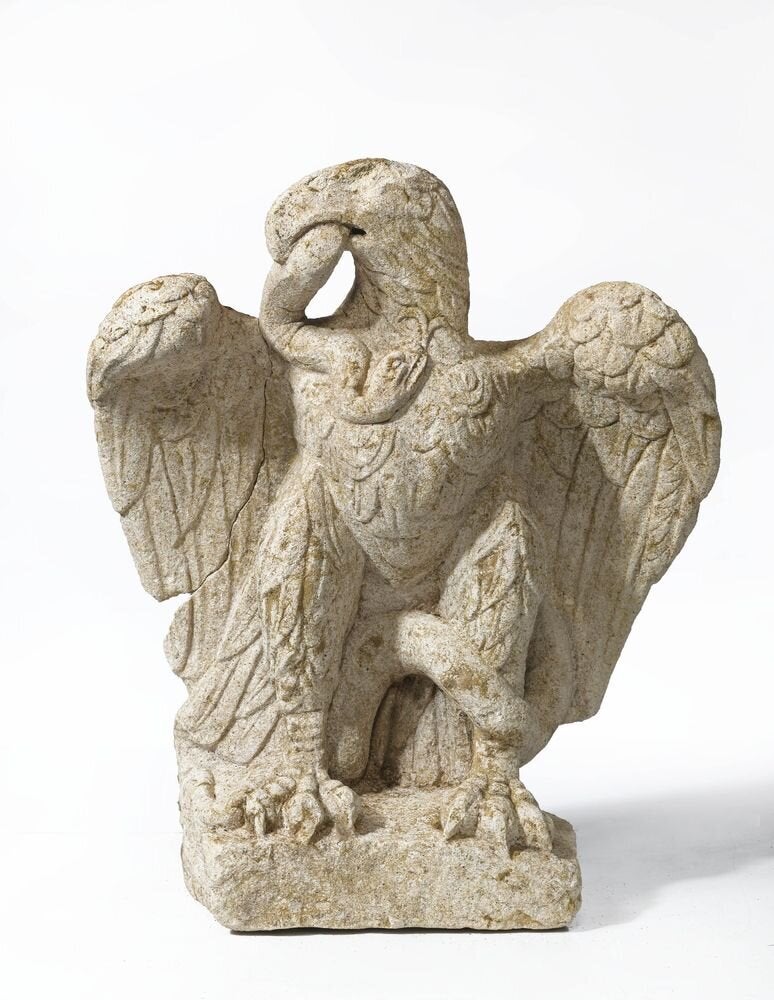Archaeologists have unveiled an "exceptional" Roman sculpture that was only just found hours before a dig was about to end in London.
Experts have declared the eagle clasping a serpent in its beak which was found in the City of London before the site's redevelopment into a 16-storey hotel, "the finest sculpture by a Romano-British artist ever found in London".
Archaeologists also unearthed foundations of a mausoleum on the east London site and believe that the statue, dating from the first or second century AD and made from oolitic limestone from the Cotswolds, once adorned it.
Story continues after slideshow...
The sculpture came out of the ground "covered in soil and unrecognisable" in September in the last few hours of an excavation that had lasted several months.
It is said to be in such good condition - details such as the forked tongue of the snake and the individual feathers of the eagle remain - that archaeologists could not believe it was 1900 years old and were initially hesitant to announce the find until it had been seen by several experts.
The sculpture features an eagle grasping a writhing serpent in its beak and is thought to symbolise the struggle of good (the eagle) against evil (the snake).
SEE ALSO:
The object, which is 65cm tall and 55cm wide, is thought to have been placed in an alcove at the mausoleum.
Images of eagles and serpents are typically Roman and the discovery has helped experts understand what the cemeteries and tombs outside the city walls looked like.
It was already known that a celebrated school of Romano-British sculptors worked in the Cotswolds, but only a few fragments of their work have been previously found.
Reverend Professor Martin Henig, a leading expert in the field, said that the object was "the finest sculpture by a Romano-British artist ever found in London and amongst the very best statues surviving from Roman Britain".
Michael Marshall, finds specialist at Museum of London Archaeology (Mola), added: "The eagle is a classically Roman symbol and this new find provides a fascinating new insight into the inhabitants of Roman London and demonstrates their familiarity with the iconography of the wider classical world.
"Funerary sculpture from the city is very rare and this example, perhaps from inside a mausoleum, is a particularly fine example which will help us to understand how the cemeteries and tombs that lined the roads out of the city were furnished and the beliefs of those buried there."
Mola project manager Louise Davies said it was an archaeologist's "dream to find such a beautiful sculpture", adding: "The fact that we found it on the last day of the dig was a real bonus."
The object will go on display for six months at the Museum of London from Wednesday October 30.
